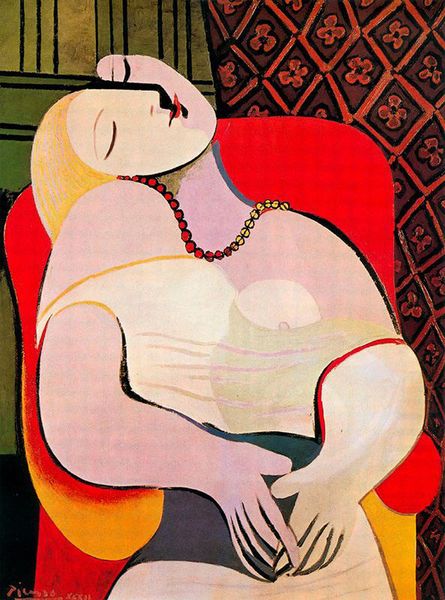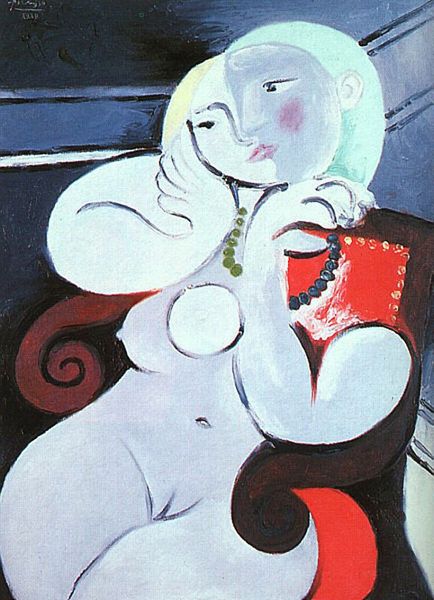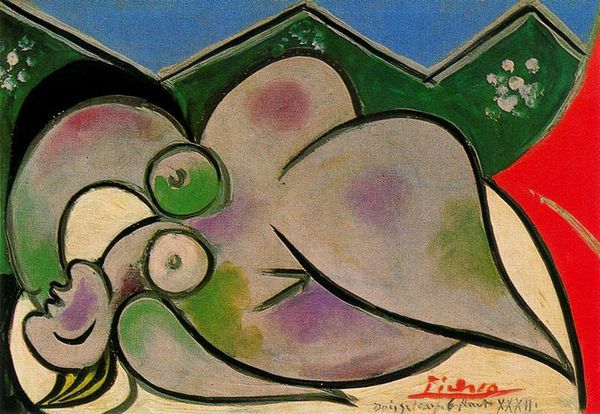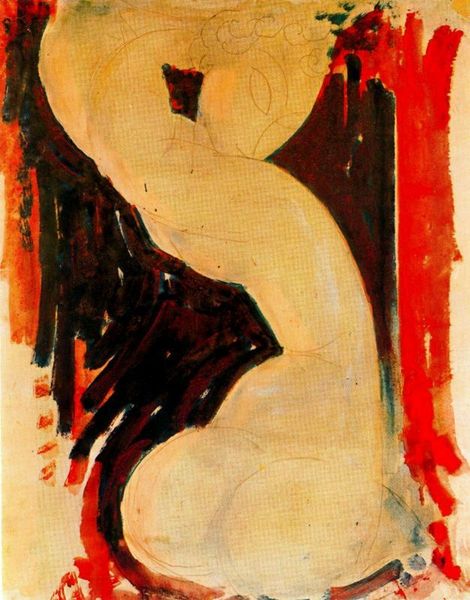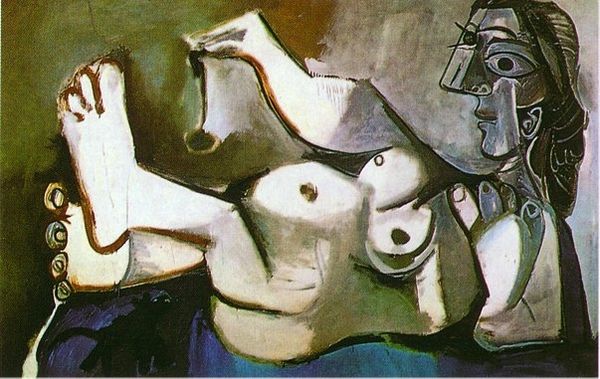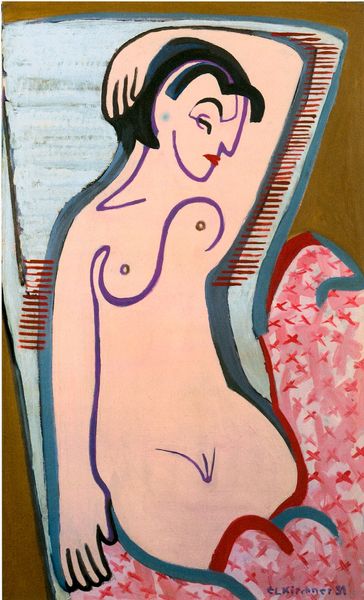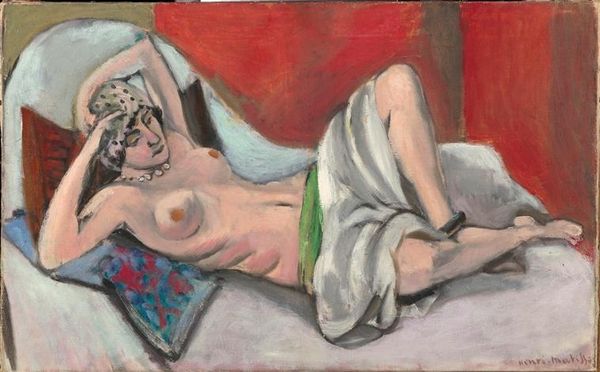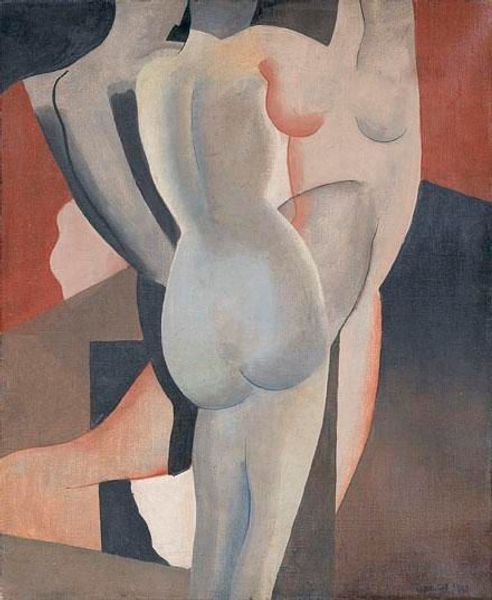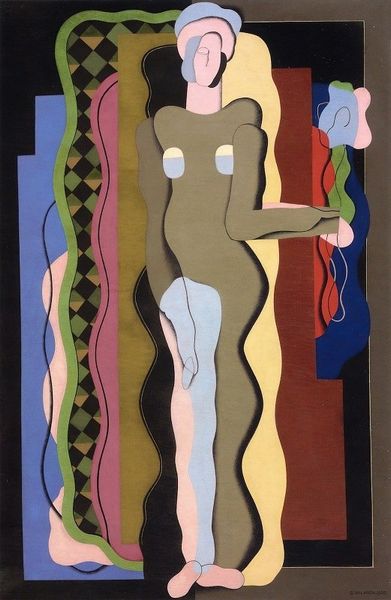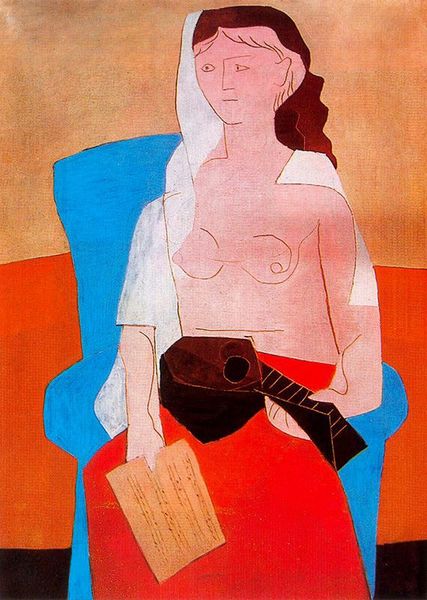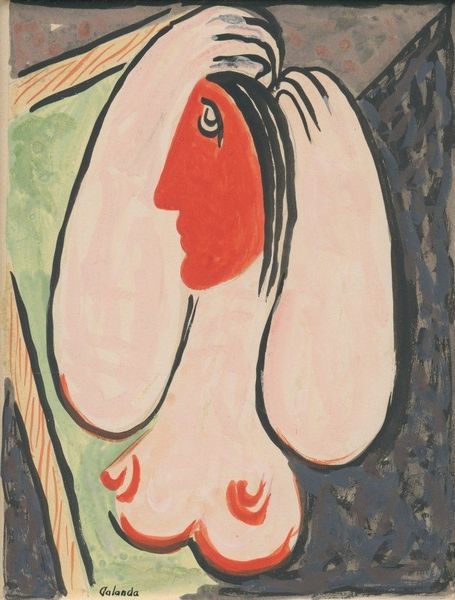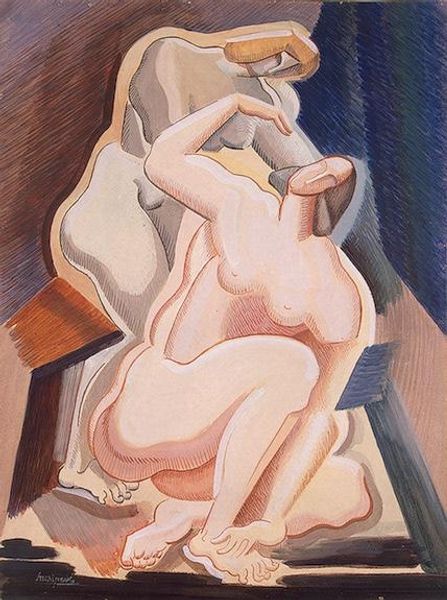
Dimensions: 130 x 97 cm
Copyright: Pablo Picasso,Fair Use
Curator: Upon viewing this work, "Sleep," painted by Pablo Picasso in 1932, I’m immediately struck by the distorted shapes and serene composition. It evokes a peculiar sense of peace and vulnerability. Editor: Picasso painted this piece using oil paint, and the sensuality and exaggeration is clear even from a distance. Curator: Yes, the female figure rendered in a semi-abstract manner embodies a very particular gaze. Looking closely at the application of the paint, one is reminded that the materiality here isn't aiming for photorealism; instead, it pushes against academic representation. Picasso painted his young muse Marie-Thérèse Walter in a state of repose; in exploring these themes, this canvas touches upon ideas surrounding sexuality and subconscious desires during the Surrealist period. Editor: The way the form melts across the chair underscores those subconscious explorations, like dreamscapes materializing through line and color, but if we turn our attention to the canvas and the paint itself, we’ll see that there's not so much impasto texture, with more of a subtle blending, that gives that softness despite its distorted forms. In using the industrial paint materials of his time, it almost reads against the organic nature of his subject! Curator: That contrast is important, but how do you feel that speaks to ideas of gender and the role of women at this historical juncture? There is the idea of passive muses, of artistic appropriation. Walter, for example, had less agency within her social context than Picasso as the acclaimed, celebrated artist. Her portrayal, however gentle or abstracted, embodies elements of those imbalanced dynamics. Editor: That’s where its significance resides—by viewing "Sleep" with these considerations about the female figure through labor and process, it challenges how value gets made both physically and culturally. I think we're better positioned to address not just artistic production here but social production, too. Curator: I find that this engagement allows one to interpret artistic representation as embedded within power relationships, urging all who encounter it to inquire beyond mere formalism toward more difficult yet essential truths about gendered identity itself! Editor: Yes. Through reflecting on Picasso’s choices in materiality and method alongside the sitter and the social world it helps sharpen a needed analysis of this historic and incredibly beautiful piece.
Comments
No comments
Be the first to comment and join the conversation on the ultimate creative platform.
